What Grows the Fastest in a Garden? Top Speedy Plants to Cultivate
Are you itching to see the fruits of your gardening labor sooner rather than later? You’re in luck! There’s a world of fast-growing plants that can transform your garden in no time. For those who are just starting out, your edible garden can be thriving quickly with some easy-to-grow options.
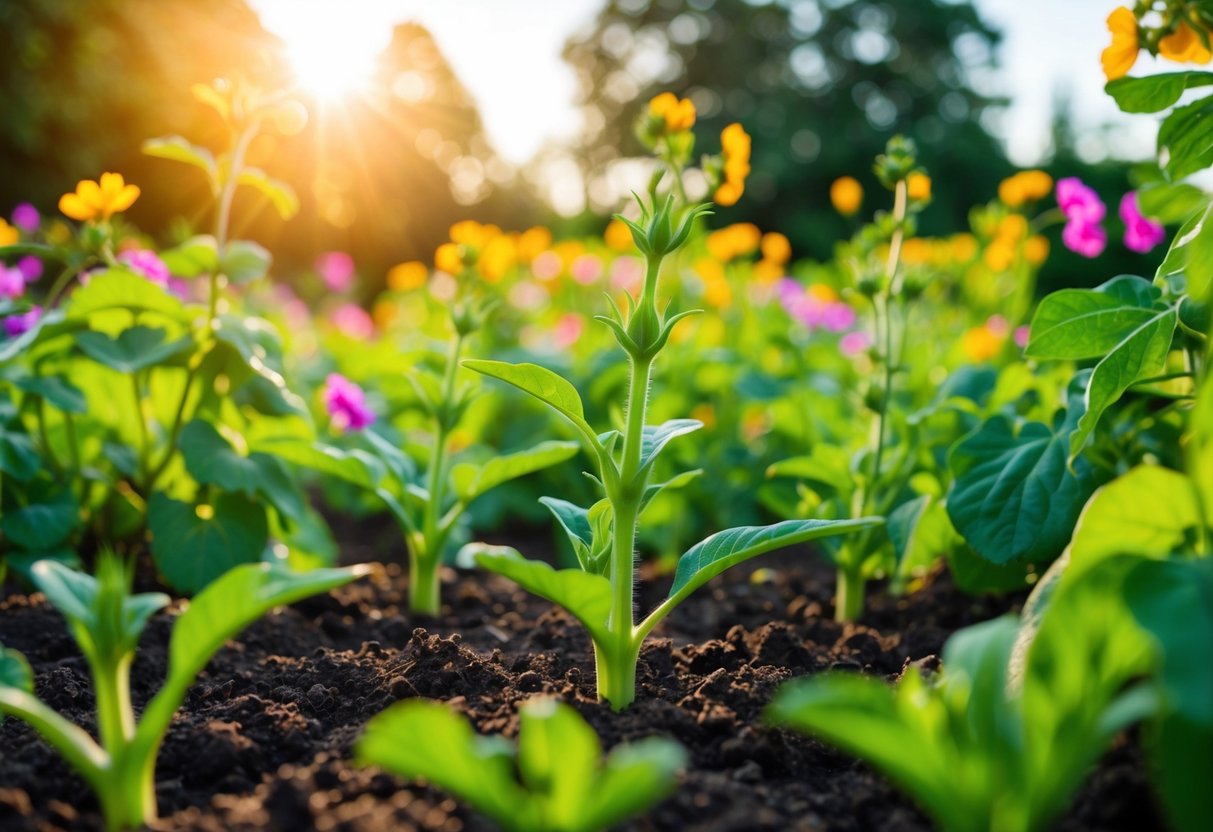
One of the fastest-growing vegetables is radishes, which can be ready to harvest in just 20 to 25 days. These little wonders can rapidly fill your garden with vibrant colors and flavors. If you’re looking for something leafy, kale is another speedy choice, known for its cold tolerance and ready to harvest in about 50 to 55 days. It can be a staple for your salads and smoothies in almost no time.
For a garden full of variety, consider planting chives. This versatile herb is not only fast-growing but also beautiful, with its grass-like foliage and purple blooms. Ready to dive into gardening with these quick-growing wonders? Your journey to a flourishing garden is about to begin!
Understanding Plant Growth Rates

To successfully grow plants quickly and efficiently, it’s essential to understand how different factors like days to maturity, germination period, and growth conditions play a role. This knowledge helps you make informed choices when planning your garden.
Days to Maturity
Days to maturity refers to the time it takes for a plant to grow from a seed to a stage where it can be harvested. This time frame can vary greatly between plants. For example, leafy greens like spinach can mature in as little as 30 days. On the other hand, some fruit-bearing plants, like tomatoes, may take several months.
Choosing the right plants for your climate and available growing season is important. If your growing season is shorter, look for plants with fewer days to maturity. You can often find this information on seed packets or plant labels.
Understanding the days to maturity helps you plan your planting schedule so you can enjoy fresh produce throughout the season. Consider succession planting to maximize your harvest by planting new crops as others finish maturing.
Germination Period
The germination period is the time it takes for seeds to sprout and begin to grow. This period varies with each plant species. Fast-growing seeds like radishes can germinate within a few days, whereas others like peppers may take two weeks or more.
To speed up germination, ensure seeds are sown in optimal soil conditions. Most seeds need warm temperatures and consistent moisture to germinate. Some seeds may benefit from soaking or stratification, which involves chilling them before planting.
Paying close attention to the germination period is key. It allows you to plan when to start seeds indoors or directly in the garden, ensuring plants have enough time to grow and mature before the end of the growing season.
Growing Conditions
Growing conditions are crucial in determining how quickly and successfully your plants develop. Key factors include sunlight, water, and soil quality. Most plants require at least six hours of direct sunlight for optimal growth. Without enough light, plants may grow slowly or become weak and leggy.
Water needs vary, but consistent moisture is vital, especially during the early growth stages. Well-draining soil rich in organic matter creates a good foundation for healthy plant growth. Adjusting soil pH to fit the preferences of specific plants can make a big difference.
Pay attention to local climate and weather patterns. Tailor your watering and care practices accordingly. Doing so ensures your plants thrive, allowing for faster and more abundant growth.
Choosing the Right Plants for Speed
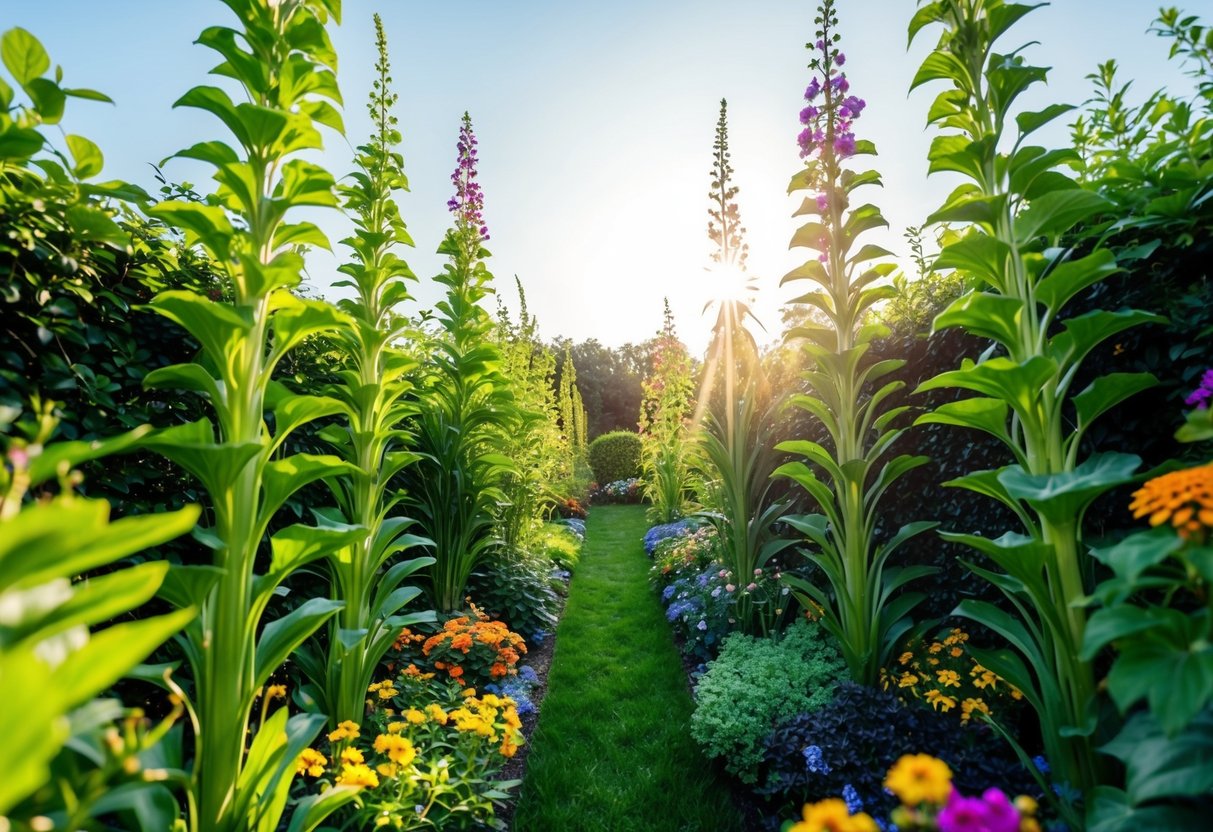
When looking to see fast results in your garden, it’s important to pick plants known for their rapid growth. This can include certain vegetables, herbs, greens, and vibrant flowering species that bring quick beauty and bounty to your garden space.
Fast-Growing Vegetables
Choosing vegetables that grow quickly can give you a productive garden in no time. Consider planting radishes, which can be ready for harvest in as little as 3-4 weeks. Lettuce and spinach are also excellent choices for speedy growth; they mature in around 4-6 weeks.
For larger vegetables, cucumbers and zucchini are great options. They typically produce fruit within 40-60 days after planting. If you prefer beans, green beans and bush beans are known for their rapid growth as well. They become harvest-ready in about 50-60 days. Matching the right vegetable with its preferred environment will ensure you see results quickly.
Herbs and Greens
Herbs and greens are lovely additions to any garden, and they don’t keep you waiting. Basil and cilantro grow quite fast, with basil leaves often ready to pick in less than a month. Cilantro can be harvested in about 3-4 weeks as well.
Parsley and chives are other good options for those seeking quick growth. These herbs can provide fresh flavors to dishes in just a few weeks. Moreover, if you’re a salad lover, planting lettuce varieties can give you fresh, crisp leaves in no time.
Ensure that these herbs get plenty of sunlight and water regularly to promote quick, healthy development.
Flowering Annuals and Perennials
For a splash of color, flowering plants that grow swiftly can brighten your garden quickly. Marigolds are a fantastic choice, as they usually start blooming about 8 weeks after sowing seeds. These flowers are easy to grow and deter pests with their scent.
Consider zinnias and cosmos for vibrant annuals that come into bloom quickly. Some perennials, like black-eyed Susans, also flower rapidly and return year after year. To see the best outcomes, plant these varieties in spots with good sunlight and water them properly. They will reward you with a lovely burst of color in your garden.
Vegetable Garden Essentials
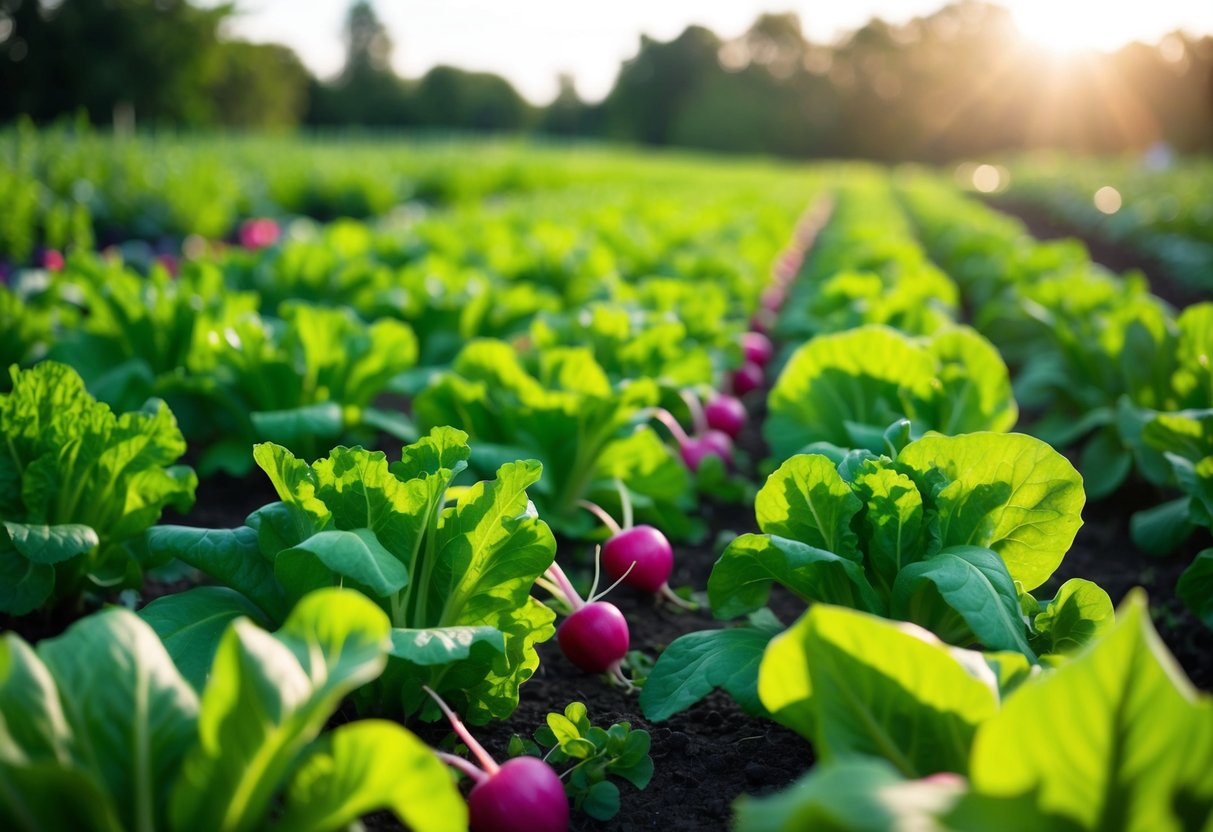
A thriving vegetable garden begins with careful planning and proper techniques. Essential factors include preparing the soil, utilizing continuous harvest methods, and managing pests efficiently. These steps can help you enjoy a bountiful supply of vegetables like bok choy, radish, and baby carrots.
Preparing the Soil
Healthy soil is the foundation of a successful vegetable garden. Start by testing your soil to understand its pH and nutrient levels. Amending your soil with organic matter like compost can greatly improve its texture and fertility, creating ideal conditions for vegetables like arugula and turnips to thrive.
Ensure proper drainage by loosening the soil with a garden fork. This prevents waterlogging and encourages root growth. Consider adding natural fertilizers and lime, if needed, to balance pH and provide nutrients critical for fast-growing plants like radish and bok choy.
Continuous Harvest Strategies
To maintain a steady supply of vegetables, stagger your planting. For instance, sow radish seeds every few weeks to ensure a continuous supply. Choose vegetables that grow quickly and can be harvested multiple times. Bok choy and arugula are known for their quick maturity and can be harvested as needed until they fully mature.
Use succession planting, which involves planting new crops immediately after harvesting mature ones. This technique maximizes your garden space and allows for a constant rotation of vegetables like baby carrots and beets, ensuring your table is always stocked with fresh produce.
Pest Management
Protecting your vegetable garden from pests is crucial. Start by planting pest-resistant varieties of vegetables and using companion planting to deter harmful insects. For instance, marigolds can deter pests naturally when placed near carrots or beets.
Inspect your plants regularly for signs of pests and diseases. Use barriers like nets or row covers to protect your plants from birds and larger pests. If needed, apply organic pesticides such as neem oil sparingly to manage infestations while preserving beneficial insects in your garden ecosystem. Always focus on preventing pest issues rather than reacting after they occur.
Beyond Edibles: Fast-Growing Decorative Plants
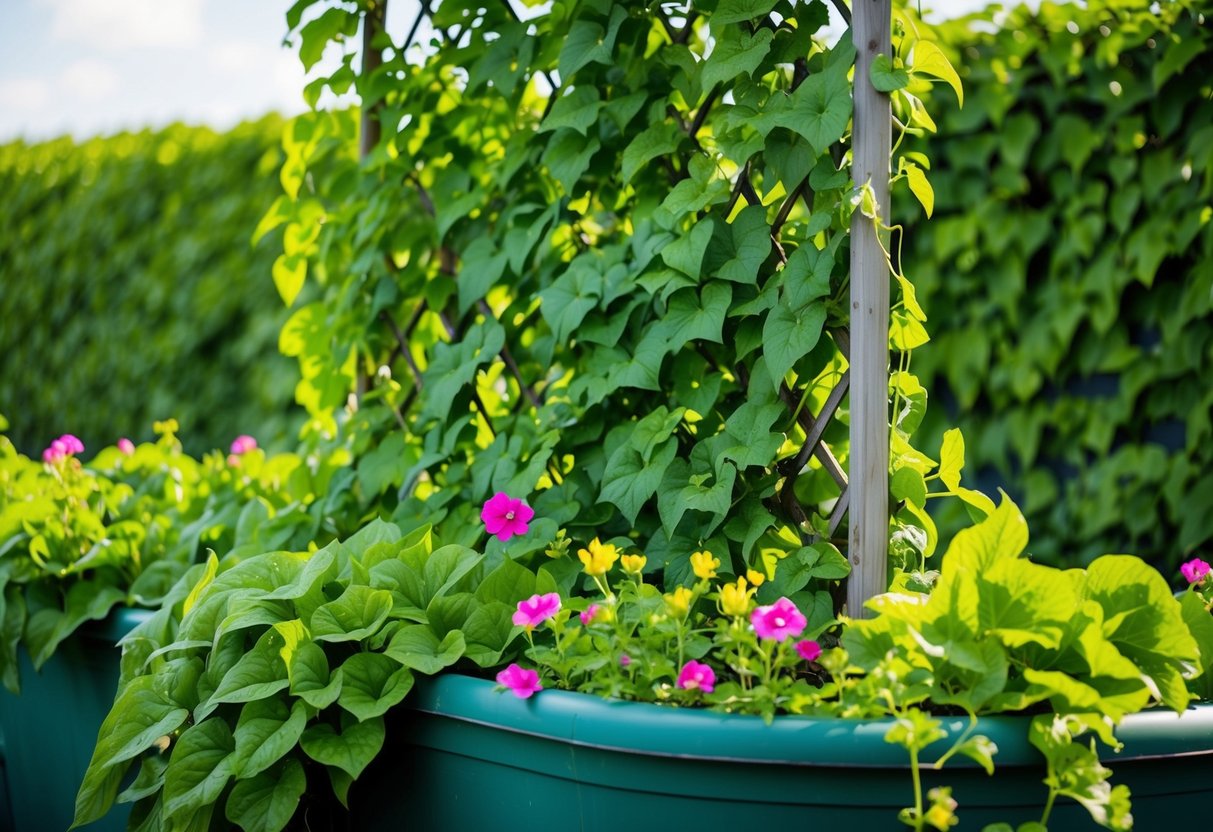
Decorative plants can enhance your garden by providing vibrant colors and lush greenery. Choosing varieties that grow quickly ensures your garden flourishes in no time, offering beautiful aesthetics and texture.
Ornamental Grasses and Shrubs
Ornamental grasses add texture and movement to your garden. Butterfly bush is a fast-growing shrub admired for its colorful flowers that attract butterflies. Another choice is loropetalum, known for its stunning purple foliage.
Plumbago is a small shrub with a fast growth rate and charming blue flowers. It’s excellent for adding a soft color palette. Many of these plants can fill empty spots in your garden quickly, making them a favorite among gardeners who want instant results.
These grasses and shrubs don’t just stand out visually; many are hardy and low-maintenance. This makes them perfect for busy gardeners who desire beauty without constant care. Using a mix of these plants can create a dynamic garden space that’s both lush and lively in a short time.
Climbers and Vines
Climbing plants add vertical interest. Clematis is famous for its large, stunning flowers, and it grows with enthusiasm. With proper support, clematis can gracefully cover trellises and garden walls.
Nasturtium is a fast-growing vine that adds not only visual appeal but also edible flowers. It can enhance vertical spaces with vibrant blooms. Hops, often used in brewing, features attractive green cones and grows rapidly, perfect for creating shade or privacy.
Incorporating these climbers helps your garden utilize space efficiently, adding height and depth. By choosing fast-growing vines, you can transform plain fences and unsightly walls into living works of art relatively quickly. They add a fresh dynamic to any gardening project.
Caring for Your Garden Year-Round
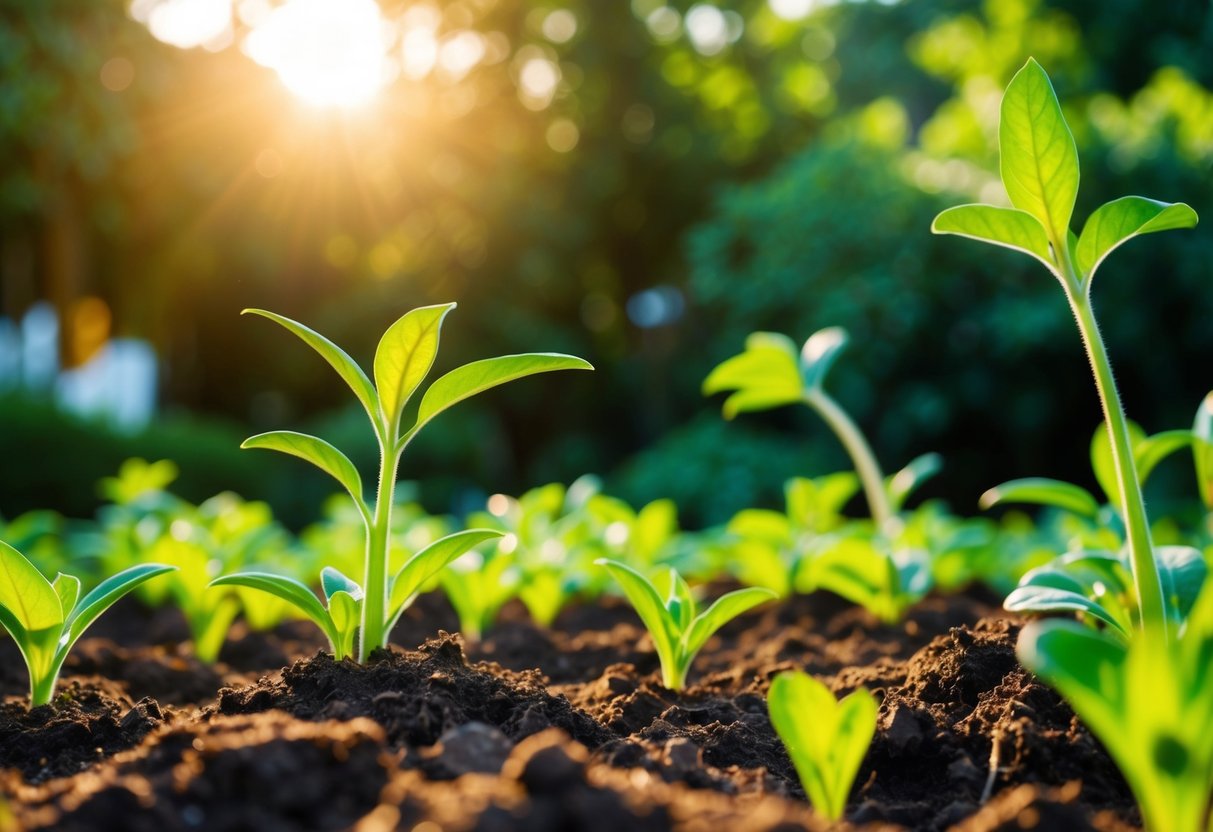
Taking care of your garden throughout the year requires planning and adaptation. It involves seasonal planting, extending the growing season, and smoothly transitioning between different seasons.
Seasonal Planting Guide
A thoughtful seasonal planting strategy ensures a thriving garden. Start by considering vegetables like broccoli and summer squash in spring. In the warm months, grow basil and okra, which thrive in sunlight. For fall, hardy greens such as kale and mustard greens do well.
In winter, protect perennials and consider growing indoors to maximize space. Think about adding shrubs or trees that can endure cold weather. Marigold can also be introduced at different times, offering natural pest control. Keep track of these patterns to create a diverse and continuous garden cycle.
Extending the Growing Season
Extending the growing season lets you enjoy fresh produce longer. Utilizing cold frames or row covers can protect plants like microgreens, cress, and tatsoi from unexpected frosts. These tools capture heat, enabling you to grow sensitive plants, like mustard greens, even during chilly nights.
Consider adding mulch around perennials and trees to keep roots warm. Plant resistant varieties of broccoli and shrubs designed for resilience in fluctuating climates. Lastly, portable greenhouses can help manage conditions, allowing summer squash and basil to continue producing beyond their regular seasons.
Transitioning Between Seasons
Switching from one season to the next requires careful timing and smart planting choices. Remove annuals like summer squash once their cycle is over. Replace them with cold-hardy crops like broccoli or select plants that can co-exist, such as kale, during transitional times.
Keep an eye on the weather to anticipate needs for seasons like fall and spring. You can add marigold or mustard greens as cover crops to maintain soil health. Shrubs and humulus lupulus need pruning during this phase to prepare for new growth. Manage transitions smoothly with these thoughtful choices to uphold a healthy, year-round garden.







